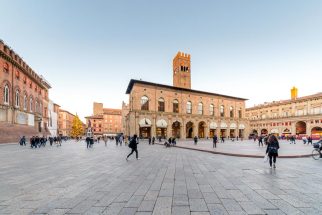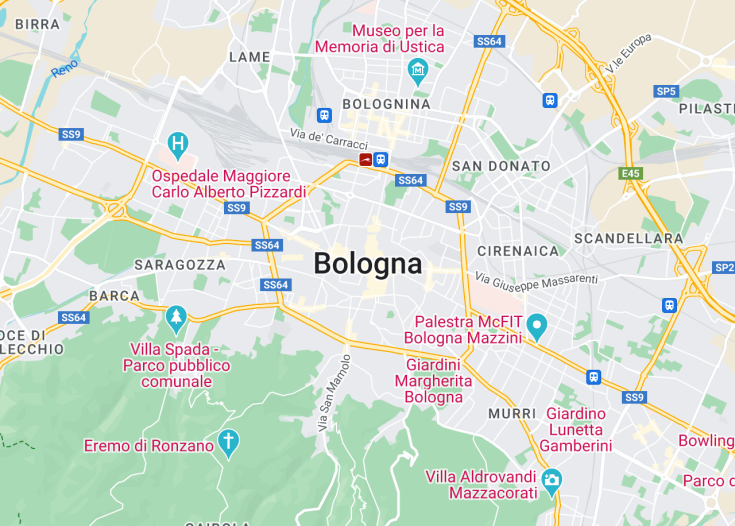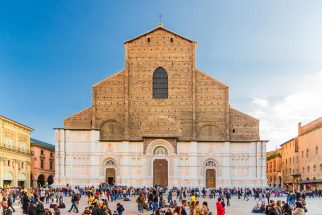Welcome to the beautiful city of Bologna, a captivating destination that offers a unique and enriching tourist experience. Known for its rich history, vibrant culture, and exquisite cuisine, Bologna is a must-visit city for travelers seeking an authentic Italian experience.
If you’re planning a visit to Bologna, we recommend staying for at least a week to fully immerse yourself in the city’s charm and explore its many attractions.
To make the most of your visit to Bologna, we suggest starting your journey at Piazza Maggiore, the heart of the city, where you can admire the magnificent Basilica di San Petronio and enjoy the vibrant atmosphere of the surrounding cafes and shops.
Top things to do & see in Bologna
Select the following sights and activities to discover best tickets and tours available in Bologna.
Bologna: The Culinary Heart of Italy
| Country | Italy |
| Time in Bologna | GMT+1 |
| Language spoken | Italian |
| Population | 389,261 (source: ISTAT, 2021) |
| Currency | Euro (€, EUR) |
| Airports | Bologna Guglielmo Marconi Airport (6 mi / 10 km). |
Bologna, one of Italy’s most vibrant cities, boasts a rich history and a deep-rooted gourmet tradition. Famous for its medieval architecture, it is also a hub of intellectual life and culture, housing the oldest university in the world, the University of Bologna, established in 1088. The city’s historic center, characterized by porticos and terracotta-roofed buildings, is one of the best-preserved in Italy.
Bologna is especially known for its culinary heritage. Traditional dishes such as tagliatelle al ragù, lasagna, and mortadella highlight its status as the gastronomic capital of Italy. The city’s nickname “La Grassa” (The Fat) hints at its celebrated rich cuisine, which also ranks among the reasons it was designated a UNESCO City of Music and added to the Creative Cities Network.
For art enthusiasts, Bologna’s numerous museums and art galleries, such as the Pinacoteca Nazionale and the modern MAMbo (Museum of Modern Art of Bologna), offer a feast for the senses. The city’s annual events, such as the Bologna Film Festival and the Motor Show, draw international crowds, contributing to its lively atmosphere year-round.
Culturally and politically significant, Bologna has been a central stage in Italy’s history, from the medieval times through the Renaissance and into the modern era. It was here that the first European students declared their universal rights in the 12th-century, an act which would eventually inspire the foundation of many other universities. In the 20th century, Bologna emerged as a strong center of the Italian resistance movement during World War II.
With its convenient location in northern Italy, Bologna serves as an important transport and logistic hub. It connects the north and south of the country both by road and through its efficient rail network. The Bologna Centrale train station is one of the busiest in Italy, providing high-speed train services that link northern cities like Milan and Venice to Rome and Naples in the south.
Where is Bologna?
Bologna is located in northern Italy, nestled between the Po River and the Apennine Mountains.
Distances:
| Route | Distance by car | Time by car |
|---|---|---|
| Milan to Bologna | 133 miles (214 km) | 2 hours 10 minutes |
| Florence to Bologna | 62 miles (100 km) | 1 hour 25 minutes |
| Venice to Bologna | 94 miles (151 km) | 1 hour 45 minutes |
What is Bologna famous for?
Bologna is renowned for its rich historical legacy, its vibrant university life that dates back to the medieval period, and its profound gastronomic culture, leading many to label it the food capital of Italy.
History
Ancient and Medieval Periods (Before 1088)
Bologna, known for its rich history, traces its origins back to the Villanovan culture, around 1000 BC, thriving, later, as an Etruscan then a Roman city named Bononia in 189 BC. The city’s strategic location on the Via Emilia contributed to its importance during the Roman era. With the fall of the Roman Empire, Bologna saw periods of devastation and revival. During the early medieval period, the city became a significant urban and trade center in the region, laying groundwork for its influential academic and cultural reputation.
The University and Growth (1088-1500)
A pivotal moment in Bologna’s history was the establishment of the University of Bologna in 1088, recognized as the oldest university in the Western world. This institution attracted scholars from across Europe and fostered an environment of intellectual vibrancy. During the High Middle Ages, Bologna was an important member of the Lombard League, opposing the Holy Roman Emperor. The city enjoyed a period of significant autonomy and was noted for its democratic government form, known as the Commune of Bologna.
Renaissance and Papal Influence (1500-1796)
The Renaissance period brought about a profound transformation in Bologna, with remarkable advancements in art and science. During this era, the city became a significant center of Renaissance culture, rivaling Florence and Rome. Bologna fell under the papal rule in the 16th century, influencing its political and religious landscape significantly. The period was marked by the construction of opulent palaces and the thriving of arts under the patronage of the papal court.
Napoleonic and Modern Era (1797-Present)
The end of the 18th century saw Bologna becoming part of the Napoleonic Empire. This era brought about modern administrative reforms and substantial urban development. After the Congress of Vienna, Bologna was incorporated into the Papal States until the unification of Italy in 1860. Throughout the 20th century, Bologna emerged as a major industrial and cultural hub of Italy. Today, it boasts a rich historical heritage alongside vibrant societal and educational institutions, making it a unique blend of the ancient and the contemporary.
Visit Bologna
What to see and do in Bologna
Enriched with an extensive history, Bologna offers numerous attractions that showcase its rich cultural past and vibrant present. Key sites include the medieval structures of Piazza Maggiore and San Petronio Basilica, one of the largest churches in the world. The Two Towers, Garisenda and Asinelli, present a challenging climb but reward visitors with panoramic views of the city. Culture enthusiasts should explore the University of Bologna, which houses ancient archives and art. Additionally, Bologna’s culinary scene, particularly its contribution to Italian cuisine with specialties such as tagliatelle al ragù and mortadella, is a must-experience.
- Piazza Maggiore
- San Petronio Basilica
- The Two Towers
- University of Bologna
- Sample local cuisine
Festive Moments in Bologna
Bologna hosts a variety of cultural and gastronomic events throughout the year. The Bologna Jazz Festival in autumn brings jazz greats from around the globe. In spring, Arte Fiera, one of Italy’s leading art fairs, attracts artists and collectors. The summer months illuminate the city with the Bologna Estate, featuring outdoor concerts and cinema. Finally, the historical reenactment of the Madonna di San Luca procession in May offers a glimpse into Bologna’s religious traditions and community spirit.
Best time to visit Bologna
The ideal time to visit Bologna is either during spring (April to June) or autumn (September to October). These months offer pleasant weather, fewer crowds, and a full schedule of cultural events, providing an enjoyable and comprehensive visiting experience.
Is Bologna worth visiting?
Indeed, Bologna is worth visiting for a myriad of reasons. As the educational and cultural heart of Italy, it offers a blend of historical architecture, renowned educational institutions, and a rich culinary heritage. Whether you are a history buff, a food lover, or someone in search of vibrant cultural experiences, Bologna provides a wealth of attractions and events that cater to all interests. This distinctive city not only champions its medieval and Renaissance roots but also celebrates a lively contemporary scene, making it a compelling destination for travelers.












